The 7 Best Goggles of 2024
This article originally appeared on Outside
We've all been there. You check the weather forecast in the morning--sun!--so you grab your favorite goggles with bright-light lenses and you're out the door. But then the clouds unexpectedly roll in and suddenly, you're skiing with reduced visibility, fumbling your way down the slope in what feels like a darkened closet.
Related: The Best Ski Helmets of the Year
Not being able to see properly might be the biggest hindrance to performing your best on the mountain. Don't let your goggles (or a poor lens choice) ruin your day. With the right lenses, you'll gain clarity and perspective and the world will shine a little brighter. No quality goggles these days should fog up. Ventilation, no-fog lenses, and breathable foam are must-haves. The goggles that rose above the rest offer superior clarity and a broad field of vision, so you'll never have to ski in a closet again.
The Winners at a Glance
Editor's Choice: Sweet Protection Connor Rig
Best For Wide Faces: Atomic Four Pro HD Photo
Easiest Lens-Swap System: Dragon RVX Mag OTG
Best Single-Lens Option: Glade Adapt 2
Best Over-the-Glasses Goggles: Scott Sphere OTG Amp Pro
Most Streamlined: Smith Blazer
Best Value: Goodr Snow G
The Reviews: The Best Goggles of 2024
Editor's Choice: Sweet Protection Connor Rig ($220)
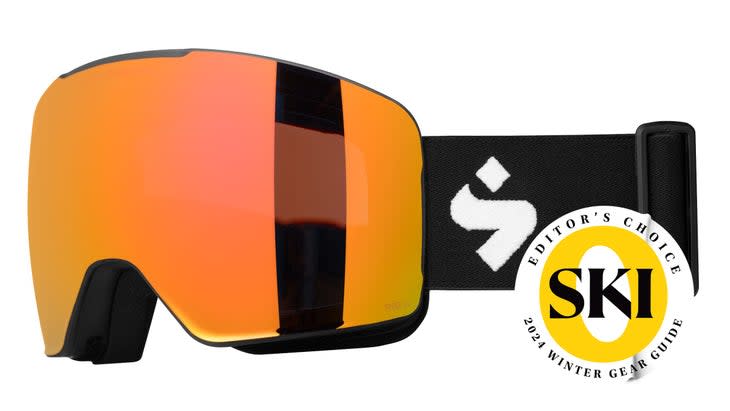
Lens shape: Toric
Number of lenses included: 1
Face fit: Medium to large
Pros: Massive peripheral vision given how low-profile the goggles look
Cons: It comes with one lens; spare lenses need to be ordered separately at an additional cost
In order to increase the field of vision, goggles these days have gotten massively oversized. But the new Sweet Protection Connor Rig offers a large field of vision without dramatically increasing the span of the goggle. These sleek frameless goggles do that thanks to a toric sculpted lens that gives you an understated feel with ample side vision. "Medium-sized fit with large-sized vision," one tester wrote. "I felt like I could see twice as much peripherally as other goggles. Extra good news on a crowded resort Saturday when you need to have your head on a swivel." The lens swaps out easily, and the one we tested--which Sweet Protection calls Bixbite--was quite versatile. "Excellent in challenging light conditions," tester Jessica Hamilton wrote. "Made things pop but still true to color." The foam against the face felt "plush and pleasing," according to another tester.
Bottom line: All-day resort rippers looking for a wide field of view and a lens that can handle most conditions will love these goggles.
Best For Wide Faces: Atomic Four Pro HD Photo ($230)
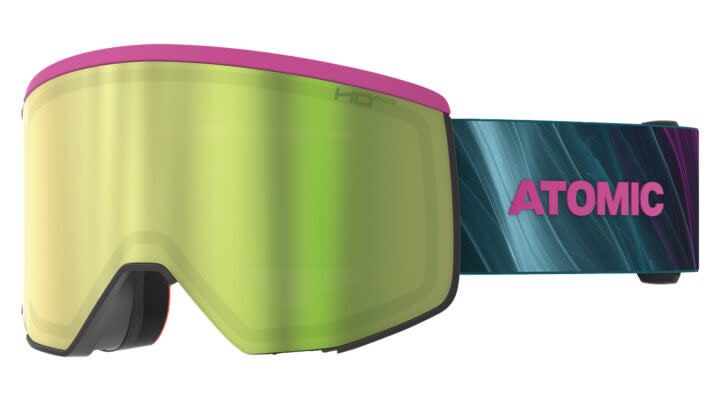
Lens shape: Cylindrical
Number of lenses included: 2
Face fit: Medium to large
Pros: High-quality lens that adjusts as the weather and light changes
Cons: Swapping out the lens took longer than it should
Testers described the Atomic Four Pro HD Photo as "well designed" and "resilient." The cylindrical-shaped lens punches above its class thanks to a photochromatic high-definition lens that automatically adjusts to changing light. It delivered some of the finest contrast and clarity in the test. "Felt durable with no gimmicks," commented tester Karl McDade. "Lens clarity and peripheral vision is outstanding." The goggles come with an extra clear lens for night skiing (because you do so much of that, right?) or very low-light days. Ample ventilation means they never fog and they let in a breeze if you're on a hike. A flat lens and anti-scratch treatment on the exterior means you'd have to try hard to put a nick on them. The goggle strap and frame are made with 32 percent recycled materials. They're a bit larger in size, which means they would work well for those with wider faces.
Bottom line: As tester Kate Shaw said, "These goggles are stylish enough for the most discerning, and sweaty-faced, park rat. And functional enough for every other sweaty-faced skier."
Easiest Lens-Swap System: Dragon RVX Mag OTG ($290)
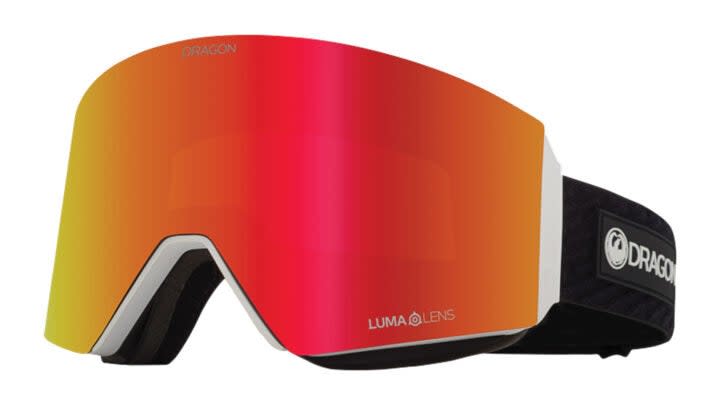
Lens shape: Cylindrical
Number of lenses included: 2
Face fit: Medium to large
Pros: A youthful, urban vibe and the easiest magnetic lens to swap on and off
Cons: These goggles have a distinctly premium feel to them, so it's no surprise they're among the priciest goggles we tested
You know those days on the mountain that are so blindingly sunny that at the end of the day, even if you never took your goggles off, your eyeballs feel scorched? That's because some lenses still let harmful infrared rays through, and that can damage your eyes and cause optic fatigue. With the frameless RVX Mag OTG, Dragon's designers focused on advanced lens technology that blocks unhealthy radiation and reduces stress on the eyes. In terms of fit, it's a Goldilocks: not too large, not too small. "The size was spot on for the modern goggle without being too big on the face," one tester said. The lens comes off in a flash, thanks to the magnetic changing system that's very intuitive (even if you don't like reading instructions). "I never look at the lens change guide and I was quickly able to figure out how to swap out the lenses," another tester chimed in. "The lens felt sturdy and locked on. The crisp lens adapted well to direct morning sun as well as low-light storm days. These goggles are over-the-glasses compatible, too.
Bottom line: If you want goggles that make you feel cooler than you are, you've found them. Everyone from soul skiers to park devotees could rock these.
Sponsor Content
Seagull Foldable Snow Goggles ($39.99)
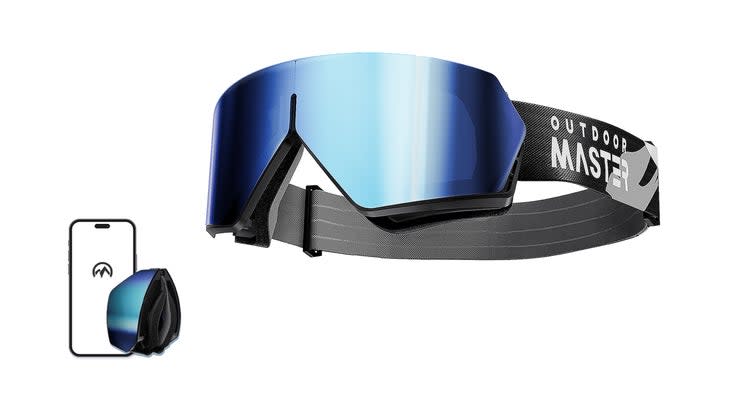
Take your winter pursuits to the next level with the Seagull Foldable Snow Goggle. The innovative foldable design permits excellent packability and convenience. If you’re looking for a lightweight goggle to fit your on-the-go lifestyle, the search is over. These goggles offer complete UV protection and have an impressive fog-resistance performance of 270 seconds--much higher than the 30-second standard. Plus, with a dual-layer, high-definition lens for clarity and durability in extreme conditions, the Seagull Foldable Snow Goggle is exactly what you need to ski or ride all day, every day.
Best Single-Lens Option: Glade Adapt 2 ($149)

Lens shape: Cylindrical
Number of lenses included: 1
Face fit: Medium to large (also comes in a smaller version--the Adapt 2S--for smaller faces)
Pros: Highly adaptable lens that works well in all light conditions
Cons: The strap was a little tricky to adjust and tighten
Imagine this: a goggle that doesn't require toting around a second lens. The Glade Adapt 2 is the second iteration of Glade's beloved one-lens solution, the Adapt, which comes with an all-conditions lens that can be swapped out, but probably won't need to. The Adapt 2 has a new photochromatic lens with a drastically wider range for what kind of light conditions it can handle. Meaning you can truly wear this goggle in blazing sun or milky storms. "The lens really did adapt to various conditions throughout the day. The name isn't a joke," one tester commented. Tester Kate Shaw added, "If I were traveling or didn't want to deal with multiple lenses, this goggle is the answer." The shape is compatible with helmets across brands and a grippy surface on the underside of the strap clung well to the helmet without slipping. The Adapt 2 fits medium to large faces best; an Adapt 2S was designed for smaller or more narrow mugs.
Bottom line: Any skier or rider looking for a reliable one-lens option will be happy with these.
Best Over-the-Glasses Goggles: Scott Sphere OTG Amp Pro ($140)
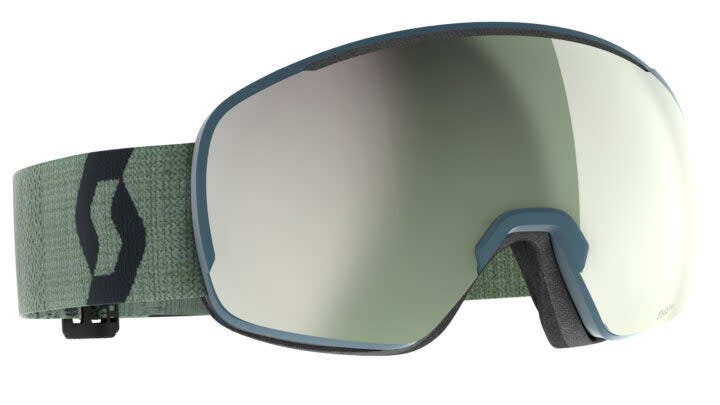
Lens shape: Spherical
Number of lenses included: 1
Face fit: Small to medium
Pros: Simple one-lens goggles that take the guesswork out of what lens to wear today.
Cons: The goggle strap is extra wide, and some testers had a hard time squeezing it into their helmet's goggle clip.
The new Scott Sphere OTG Amp Pro was designed to wear with prescription glasses, but even our non-spectacled testers praised the fit and comfort of this easy-to-please goggle. The lens doesn't swap out, and this year's version of this goggle comes pre-installed with Scott's new Amplifier Pro white chrome lens, which enhances contrast on overcast days and reduces eye fatigue from the sun's rays on brighter ones. "The world looked more beautiful through this lens," one tester said. A curved spherical lens offered wide peripheral vision and glare was non-existent. "This was a great flat-light lens," tester Kate Shaw added. The size of the frame is moderate and not overbearing, and this goggle fit testers with small to medium faces best. Three-layer face foam felt breathable on short inbounds hikes and pleasantly soft against the face.
Bottom line: If you don't want to deal with multiple lenses for different days or if you wear prescription glasses, these are your goggles.
Most Streamlined: Smith Blazer ($90)
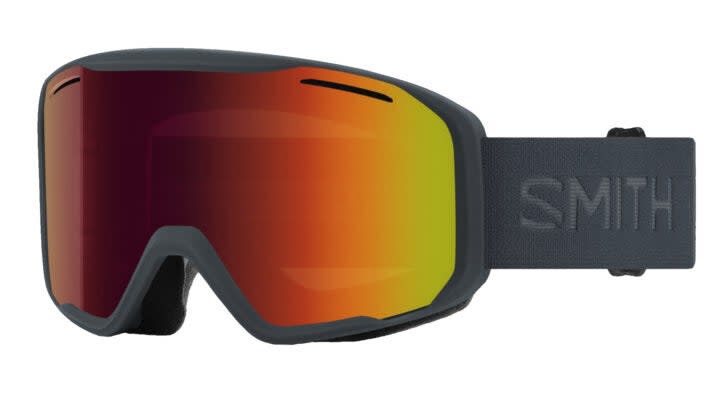
Lens shape: Cylindrical
Number of lenses included: 1
Face fit: Small to medium
Pros: Comfortable on the face with solid optics in bright light.
Cons: Only thing it didn't score above average on was its peripheral vision.
The new Smith Blazer is a simple, lightweight goggle--with no bells and whistles--but testers applauded its optics in full sun and low light. "It has minimal standout features," tester David Anhalt said. "It's a no-frills goggle that'll do the job pretty darn well." Two-layer face foam held up in wet and sweaty conditions and fog was never an issue. "The lens provided great contrast and did not steam up on a hike," added another tester. This is a modest-sized frame, so it'll fit those with smaller- or medium-sized faces best. (If you're looking for an oversized or large goggle, this is not it.) The Blazer was most compatible with Smith helmets, but it sat decently flush with other brands, too. It's a fixed lens--so not interchangeable.
Bottom line: Perfect for weekend warriors who want a get-the-job done goggle without any extra frills at a good price.
Best Value: Goodr Snow G ($75)
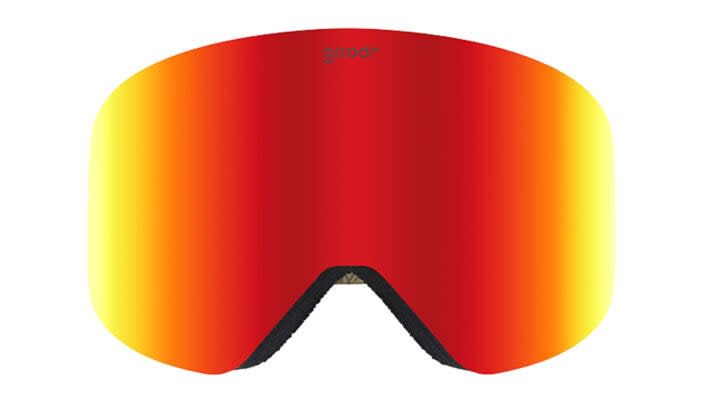
Lens shape: Cylindrical
Number of lenses included: 2
Face fit: Medium
Pros: That price tag isn't a typo. This goggle is silly cheap--and performs way above its price bracket.
Cons: The magnetic lens is really easy to swap out, but it also pops off unintentionally if you tug the goggles the wrong way.
We're not quite sure how they did it, but Goodr's first foray into the goggle market is a slam dunk. Goodr, which launched in 2015 with $25 polarized sunglasses, essentially makes lenses at the same price point as those you'd buy at the gas station but way more fun and better quality. Their first goggle, the Snow G, comes in candy-bright colorways with names like Bunny Slope Dropout (pink), Here for the Hot Toddies (orange), and Apres All Day (black). Like much more expensive goggles, it comes with a magnetic lens detaching system that swaps out in a second for an included low-light lens. The lenses come with an anti-fog and anti-glare coating. Our testers didn't know the price of these goggles, and they all praised the lens quality on sunny and cloudy days and were in awe of how easy it was to swap out lenses.
Bottom line: If you're someone who loses or scratches goggles on the regular, this budget-friendly option will ease your concerns.
Frequently Asked Questions
How do I choose ski goggles?
There are three different shapes of lenses on the market these days: spherical, cylindrical, and toric. The shape impacts how the lens performs, the width of field, and the cost. Spherical lenses have more of a rounded, bubble-like effect, with wide peripheral vision that curves away from your eyes on both axes. Spherical lenses tend to be inherently fog-free thanks to increased volume, offer undistorted vision, and cost a bit more. Cylindrical lenses curve across your face but are flatter up and down. They have a more low-profile, smaller volume look and they're easy to keep scratch-free since they're flatter against your face. They tend to be less expensive. The third shape, toric, is newer to the scene and combines aspects of the previous two shapes, making it a low-profile goggle that retains peripheral vision.
Besides shape, consider what frame size would work best on your face. If you have a larger or rounder head, you'll want a more oversized goggle. If you've got a slight or narrow face, opt for a goggle that runs on the smaller side. Some goggles come in a small version. Another thing to keep in mind is whether you want a goggle with lenses that swap out--so you can fine-tune your vision based on the weather and light conditions--or if you prefer a more universal lens that can handle most conditions. If you wear prescription glasses, look for goggles with the OTG (over the glasses) indicator.
How do you prevent ski goggles from fogging?
Newer goggle models have extensive ventilation and an inner lens coating to prevent fogging. However, physics dictates that if there is sufficient moisture being provided from within, combined with warm and moist outside conditions, the goggles might eventually fog up. When backcountry skiing, it is best to keep goggles in your backpack and get them out for the descent to avoid fogging issues. Don't hike with them on your hat, helmet, or worse yet, around your neck. When you're skiing at the resort, keep your goggles on your face as much as possible. A trick for tram or gondola riders is to take them off and hang them from a window or tip of your skis to help keep them dry and shed some moisture. If you just put the goggles up on your helmet, they will not air out sufficiently, and the vents on your helmet could also pump additional moisture inside the goggle. Read more here.
How We Test Ski Goggles
Number of testers: 10
Number of goggles tested: 31
Inches of snow received during the Tahoe-based test: 710
Storm days skied while testing: 41
Sunny days skied while testing: 11
To determine which goggles were the biggest crowd pleasers, we took dozens of new-for-this-season goggles and distributed them amongst ten hardy skiers and riders based in California's North Lake Tahoe. Ranging from ski-industry veterans to weekend shredders, these hard-working testers spent over seven weeks wearing a multitude of goggles while resort skiing and backcountry touring. The test happened to coincide with one of Tahoe's snowiest winters on record, with over 700 inches of snow and 178 percent above average snowfall. We asked testers to wear the goggles in all kinds of weather and light conditions, then fill out a feedback form that indicated everything from face fit to lens quality to helmet compatibility. In this test, we looked for adaptable, versatile goggles that were compatible with a wide range of helmets and fit on a variety of face shapes and sizes. Using tester feedback, we narrowed the 31 goggles down to these seven models that earned the highest marks.
Meet Our Lead Testers
Category manager and Outside contributing editor Megan Michelson is a freelance journalist and lifelong skier based in Tahoe City, California. She's been covering the ski industry as an editor and writer for over 15 years. Other key testers quoted here include Palisades Tahoe ski race coach and ceramics professor Karl McDade, attorney and former big-mountain competitor Kate Shaw, and physician and ski patrol volunteer doctor Jessica Hamilton.
More from the 2024 Winter Gear Guide
The Best All-Mountain Skis of 2024
The Best Alpine Ski Boots of the Year
The Best Frontside Skis of 2024
For exclusive access to all of our fitness, gear, adventure, and travel stories, plus discounts on trips, events, and gear, sign up for Outside+ today.

